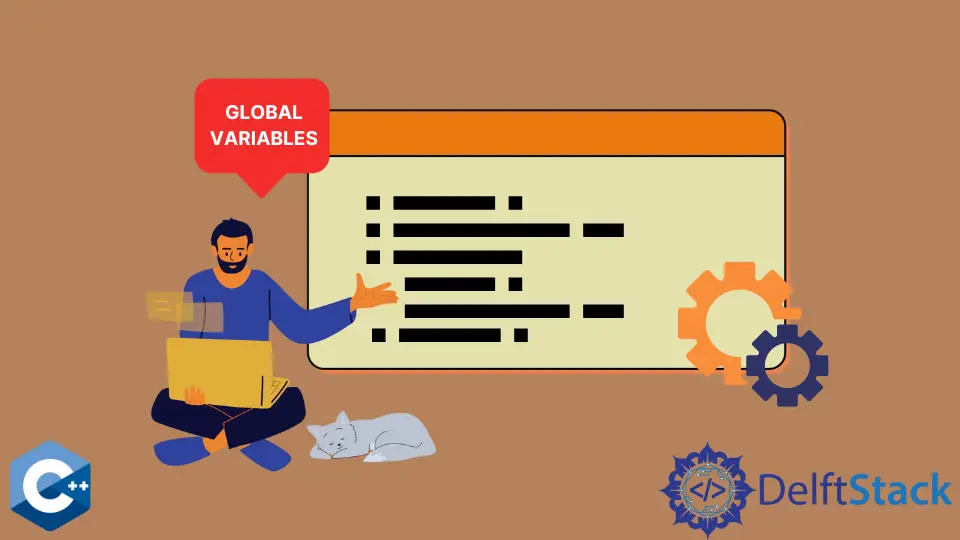如何在 C++ 中声明全局变量

本文将介绍几种在 C++ 中声明全局变量的方法。
C++ 中在单个源文件中声明全局变量的方法
我们可以用放在每个函数外面的语句声明一个全局变量。在这个例子中,我们假设 int 类型的变量,并将其初始化为一个任意的 123 值。全局变量可以从 main 函数的作用域以及它内部的任何内部构造(循环或 if 语句)中访问。对 global_var 的修改对 main 例程的每个部分也是可见的,如下例所示。
#include <iostream>
using std::cout;
using std::endl;
int global_var = 123;
int main() {
global_var += 1;
cout << global_var << endl;
for (int i = 0; i < 4; ++i) {
global_var += i;
cout << global_var << " ";
}
cout << endl;
return EXIT_SUCCESS;
}
输出:
124
124 125 127 130
另一方面,如果在同一个源文件中还定义了其他函数,它们可以直接访问 global_var 值,并在函数范围内修改它。全局变量也可以用 const 指定符来声明,这就迫使它们只能通过当前的翻译单元(包含所有头文件的源文件)来访问。
#include <iostream>
using std::cout;
using std::endl;
int global_var = 123;
void tmpFunc() {
global_var += 1;
cout << global_var << endl;
}
int main() {
tmpFunc();
return EXIT_SUCCESS;
}
输出:
124
在 C++ 中的多个源文件中声明全局变量
另外,可能有一些全局变量在不同的源文件中声明,需要被访问或修改。在这种情况下,要访问全局变量,需要用 extern 指定符来声明,它告诉编译器(更准确的说是链接器)在哪里寻找 glob_var1 定义。
#include <iostream>
using std::cout;
using std::endl;
int global_var = 123;
extern int glob_var1; // Defined - int glob_var1 = 44; in other source file
void tmpFunc() {
glob_var1 += 1;
cout << glob_var1 << endl;
}
int main() {
tmpFunc();
return EXIT_SUCCESS;
}
在某些情况下,可能会在不同的源文件中用 static 指定符声明全局变量。这些变量只能在定义它们的文件中访问,不能从其他文件中访问。如果你仍然试图在当前文件中用 extern 声明它们,就会发生编译器错误。
#include <iostream>
using std::cout;
using std::endl;
int global_var = 123;
extern int
glob_var2; // Defined - static int glob_var2 = 55; in other source file
void tmpFunc() {
glob_var2 += 1;
cout << glob_var2 << endl;
}
int main() {
tmpFunc();
return EXIT_SUCCESS;
}
Founder of DelftStack.com. Jinku has worked in the robotics and automotive industries for over 8 years. He sharpened his coding skills when he needed to do the automatic testing, data collection from remote servers and report creation from the endurance test. He is from an electrical/electronics engineering background but has expanded his interest to embedded electronics, embedded programming and front-/back-end programming.
LinkedIn